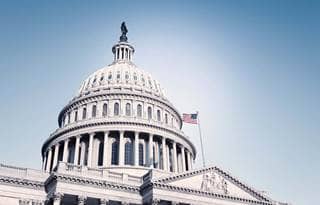In January 2017, the Governmental Accounting Standards Board (GASB) issued Statement No. 84, Fiduciary Activities, which establishes criteria for identifying and reporting fiduciary activities for all state and local governments. This statement is effective for fiscal years beginning after Dec. 15, 2018.
First, a little history
Prior to GASB 84, the only guidance in the GASB standards on how to report fiduciary funds fell within GASB Statement 14 and NCGA Statement 1. However, the guidance in those standards did not sufficiently outline the characteristics that should be considered in determining whether an activity is a fiduciary activity, which led to different interpretations by each individual government. GASB Statement 84 was developed to provide consistency and comparability across all governmental units by establishing specific criteria to identify and report fiduciary activities.
Identifying fiduciary activities
The three types of fiduciary activities defined in this standard are:
- Fiduciary component units, which include certain pension and OPEB arrangements and other component units that are fiduciary
- Pension and OPEB arrangements that aren’t component units
- Other fiduciary activities
For each type of potential fiduciary activity identified above, analysis will need to be performed using the different criteria set forth in Statement 84 depending upon the type of arrangement.
Fiduciary component units
The first determination here is whether an organization is a component unit. If so, you will then need to determine if it meets GASB 84’s new definition of a fiduciary component unit.
For pension and OPEB arrangements:
- Is a pension or OPEB plan a component unit? In order to determine whether an organization is a component unit, Statement 84 indicates that for pension and OPEB plans administered through qualifying trusts, a primary government is considered to have a financial burden if it’s legally obligated, or has otherwise assumed the obligation, to make contributions to the pension or OPEB plan. Therefore, it’s likely that when you determine if a pension or OPEB plan meets the definition of a component unit, the key criteria will be whether the primary government appoints a voting majority of the pension or OPEB board.
- Is the pension or OPEB plan component unit fiduciary? If the pension or OPEB plan is administered through a trust that meets the specified criteria within Statement 67 and Statement 74, or in circumstances in which the assets are held for entities outside of the reporting entity, Statement 84 would define these component units as fiduciary activities that should be reported in a fiduciary fund.
For arrangements other than pension and OPEB:
- If it’s not a pension or an OPEB arrangement, is another arrangement a component unit? If the arrangement is not a pension or an OPEB arrangement, you would still go through the GASB 14/61 component unit analysis to determine whether the entity is a component unit.
- Is the nonpension/OPEB component unit fiduciary? This type of component unit would meet the definition of a fiduciary activity if the assets have one or more of the following characteristics:
- Administered through a trust in which the government is not a beneficiary, and the assets are dedicated to provide benefits to recipients, and the assets are legally protected
- Held for the benefit of individuals where the government doesn’t have administrative or direct financial involvement and the assets aren’t derived from the government’s provision of goods and services
- Held for the benefit of organizations or other governments that aren’t part of the financial reporting entity, and the assets aren’t derived from the government’s provision of goods and services
Pension and OPEB arrangements that aren’t component units
Noncomponent unit pension or OPEB plans are considered fiduciary activities if the government controls the assets and either the pension or the OPEB plan is administered through a trust or held for entities that aren’t part of your reporting entity for pensions or OPEB outside of a trust. It’s important to note the definition of control. Control is defined as holding the assets or the ability to use, exchange, or employ the assets in a manner that provides benefits to the specified or intended recipients.
Other fiduciary activities
For all other activities (neither component units nor pension/OPEB arrangements), the activity must meet certain criteria to be defined as a fiduciary activity.
The activity must meet all of the following criteria:
- Assets are controlled by the government.
- Assets aren’t derived from own source revenues.
- Assets aren’t derived from government mandated or voluntary nonexchange transactions.
In addition to the three criteria above, the activity must meet one of the following:
- Assets are held in a qualifying trust where the government is not the beneficiary, the assets are legally protected from creditors, and dedicated to providing benefits to recipients.
- The assets aren’t derived from the government’s provision of goods or services and:
- Assets are held for the benefit of individuals without the government having administrative or direct financial involvement.
- Assets are held for the benefit of outside organizations that are not part of the government’s reporting entity.
As you can see, the determination of whether an activity is fiduciary now involves a number of decision points, where some of the answers may not be as straightforward as one would like. GASB provides several flowcharts within the standard to facilitate this analysis. It’s critical for all organizations to identify all potential activities that need to be evaluated using GASB’s new model. This would include not only activities currently classified as fiduciary, but also activities that may now be classified either as a governmental or business type that may now meet this definition. Additionally, governments should consider whether there are any currently unrecorded activities that would now fit this definition and therefore be required to be reported as a fiduciary fund.
Reporting fiduciary activities
Once you identify an activity as fiduciary, you then need to determine the fund type, which will drive the reporting.
GASB defines four different types of fiduciary funds, as follows.
- Pension and other employee benefit trust funds
- Investment trust funds
- Private purpose trust funds
- Custodial funds
The first three fiduciary funds are existing fund types, as defined by GASB Statement 34. The custodial fund category is new, and replaces what are currently known as agency funds. It’s important to note that the criteria for custodial funds is different from the former agency funds, due to GASB’s new definition of a fiduciary activity; therefore, some former agency activities will no longer qualify as fiduciary activities.
The financial statement reporting requirements for all of these funds types under GASB 84 will include the following:
- Statement of Fiduciary Net Position – This statement will present assets, deferred outflows, liabilities, deferred inflows, and net position of fiduciary activities.
- Statement of Changes in Fiduciary Net Position – This statement will present activity as additions and deductions to net position.
After the implementation of GASB 84, the custodial funds will - for the first time - report a statement of changes. In addition, while the former agency fund type resulted in a balance sheet where assets always equaled liabilities, in custodial funds, this won’t be the default reporting; there could be net position reported within a custodial fund.
Implications
This standard could have considerable impact on your governmental unit. Activities that were previously fiduciary may no longer fit that definition. Conversely, activities that were previously governmental, proprietary, or not on the financial statement at all could now meet the definition of a fiduciary activity.
Now is the time to plan for the implementation of this standard. Activities that will fall into governmental activities will need to be recorded for the years ending Dec. 31, 2019, so some governments may need to consider budgetary authorizations that weren’t previously required. In addition, with the required statement of changes for custodial funds, most general ledger systems and tracking mechanisms will need to be modified to accommodate the reporting of these new amounts.
Have questions? Give us a call.





